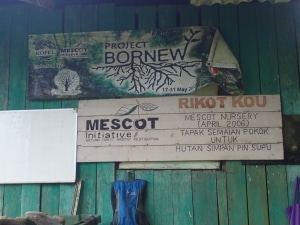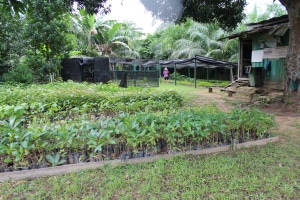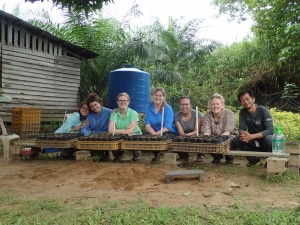On the 10th day of University of San Francisco’s (USF) Tropical Restoration Ecology class, students, led by Team Leader Paula Pereira, worked with nursery manager, Norsalleh, to both experience and help with nursery operations. KOPEL’s Nursery Program houses over a thousand individuals of each plant species being propagated at the nursery in preparation for tree plantings at restoration sites. Some of these species, in Malay, include Sepat, Bayur, Binuang, Laran, and many more totaling to over 23 species that have been planted at restoration sites so far. Trees that have been documented to be used by the forest’s wildlife species are specifically targeted for propagation. Hornbills, for instance, like the Laran tree, while Orangutans prefer the Bayur and the famed Proboscis monkey enjoys a tree called Salong Apid.

In general, plants in the nursery go through three phases from seed to sapling in preparation for planting. Mimicking the greenhouse effect, the first phase consists of broadcasting seeds in a small plastic container which is then tightly sealed with clear plastic. Once the seedlings reach an appropriate height, they are transplanted outside into soil-filled bags. The seedlings are then thoroughly and immediately watered and placed under shade. All in all, trees remain under care in the nursery for 4-6 months before heading out to the field for planting.

Not only does the nursery staff collect and propagate seeds, they also investigate and document the wildlife that use different tree species, either for food or another important purpose. Norsalleh does this by climbing up trees, in camouflaged clothing, and photographing animals with a highly sophisticated camera. This helps to inform and ensure that planted tree species benefit the forest’s wildlife. Contributing to KOPEL’s mission in this way was highly rewarding to USF’s nursery team, and we appreciate KOPEL giving us the opportunity!

-Betty, USF MSEM Student
